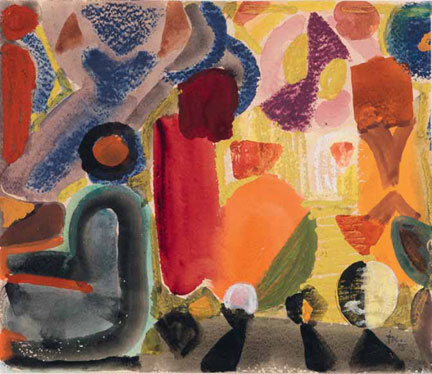Ida Kerkovius, Composition, 1955

Between 1920 and 1923, Kerkovius continued her studies at the newly founded Bauhaus in Weimar, developing her own visual language based on line, form and colour. A striking feature of this language is the luminous, high-contrast colouring, the intensity of which was increased by combining such diverse materials as watercolour, gouache and pastel. The compositions are often non-representational, though she frequently alludes to figures or objects. This is also the case in this painting – one of her late works – which allows countless permutations of possibilities: thus seated figures within a bisected space with strong light-dark contrasts could, for example, be freely interpreted as depicting a stage performance such as a concert.